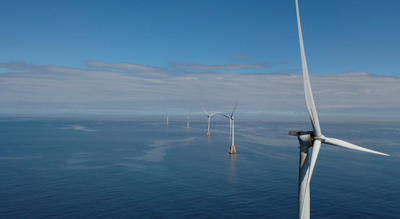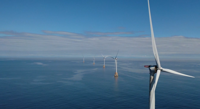DELAWARE — Governor John Carney is expected to sign the Delaware Energy Solutions Act of 2024 yesterday, setting the stage for offshore wind energy in the state. The bill aims to solidify Delaware's commitment to achieving zero carbon emissions, but it has not been without controversy.
For months, Delaware residents have been divided over the offshore wind energy, with debates taking place in information sessions and public forums. This bill aims to pave the way for offshore wind energy to help the state meet its zero-carbon goals.
The bill authorizes the DNREC State Energy Office (SEO), the Delaware Public Service Commission, and the Delaware Renewable Energy Task Force to craft a solicitation for offshore wind. Following public comment, the Public Service Commission will approve a final solicitation document and proceed with receiving and reviewing proposals.
If a proposal meets all statutory conditions, including coming in at 110% of the benchmark price, the SEO will draft a proposed contract with the successful bidder. This price cap aims to ensure the cost of energy remains manageable for ratepayers. If no suitable proposals are found, the state will not proceed.
The State Energy Office is directed to procure up to 1,200 megawatts of electricity for Delaware’s public utilities. Municipal electric companies, rural electric cooperatives, and third-party providers may also purchase this electricity if they choose. Delaware has the option to initiate its own project or partner with another state.
Proposals must have a term of at least 20 years, meet benchmark pricing guidelines, and detail potential impacts on the electrical transmission system and energy markets in Delaware. Additionally, they must specify economic costs and benefits, including job creation, supply chain requirements, and workforce development needs.
The Delaware Sierra Club, which supported the bill from the beginning, celebrated its passage.
"We’ve made history in Delaware," said a Dusty Thompson, Chapter President. "We’ve finally gotten into the game of offshore wind and are looking seriously at how to de-carbonize our electric grid. We now have a legislative mandate to cut emissions by 50% by 2030 and reach net zero by 2050."
However, the Caesar Rodney Institute, who have voiced strong opposition, say that the bill favors wind developers at the expense of taxpayers and the state.
"We shouldn’t be just looking at offshore wind. We should be considering other clean energy technologies like onshore wind, solar, nuclear, or even carbon capture, which are all lower in cost. This was brought up during the debate on this bill and ignored," said David Stevenson. He added that he believes nuclear energy solutions could be established faster than a wind farm.
Thompson disagrees, "Offshore wind is here and ready now. It’s a job creator, an energy solution, and it will decarbonize the grid at a scale that other current technologies cannot achieve," he said.


